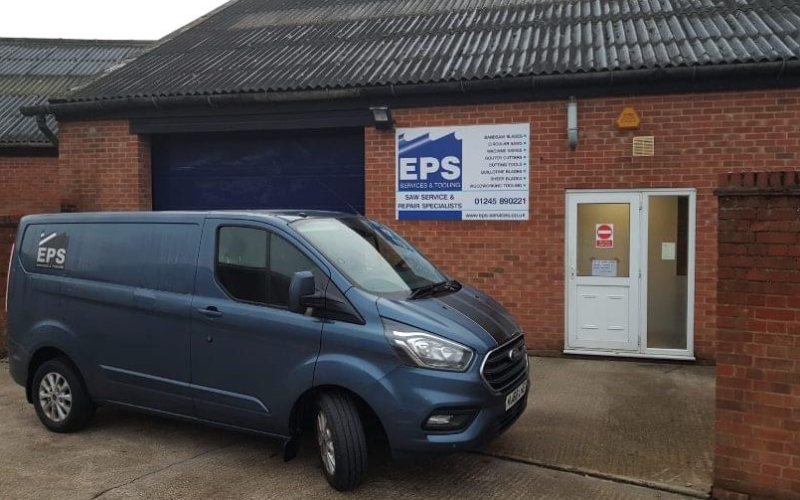A Guide To Choosing The Right Circular Saw
Circulate saws are one of the most popular blade options on the market. Available for cutting a variety of different materials and with various machines, choosing the right circular saw is vital. Doing so will reduce the risk of damage, allow you to create the highest quality cuts and help support your project – no matter how complex it is.
What Are Circular Saws?
These round discs use toothed, abrasive or angled design to help them cut through a variety of materials, including timber, cloth, metal or concrete. These portable tools are used in a rotary motion, spinning around an arbour and allowing the teeth to cut through the material smoothly and at speed. They are a very popular option for professionals and DIY enthusiasts alike, providing high saw capacity and excellent precision. Circular saws have a handle and trigger switch, giving control to the user and allowing it to adapt easily from small scale residential jobs to larger construction sites.
Benefits of Circular Saws
There are several saw options to choose from on the market. But many of the benefits of circular saws have seen them stay a popular option for many.
Mobility
The main advantage is mobility. Instead of being tied to a table or restricted on floor space with larger-sized machinery, circular saws can be taken with you to the site of your project. This also allows you to move your tool rather than the material when working on it.
Versatility
Circular saws are ideal for a range of projects. With the right blade and an experienced user, they can be used to cut everything from bevel cuts through to mitres and crosscuts. There are also a wide variety of blade options to cut many different materials and the option for carbide-tipped blades when working with denser materials like hardwood and MDF. Being hand-held, they could also be used overhead, if required.
Cost
Circular saws are mostly considered affordable and cost-effective. They can cost anywhere between £20 up to £500, depending on the brand you choose and the features you’re looking for.
Types of Circular Blades
To get the most out of your circular saw, it pays to choose the right blade for your project. And, there are many options to choose from. To select the one best suited to your needs, you need to take into account several factors, including:
- The material you need to cut.
- The type of cut you need to make.
- The job you’re working on.
Material
We’ve mentioned above how the versatility of circular saws is one of the reasons they remain so popular. And, this is largely due to the vast array of blades available to cut different materials. Standard circular saw blades are best suited for timber work. But, there are also abrasive blades for metal cutting and diamond blades with exceptional strength that support masonry work too.
Type of Cut
From ripping out during demolition work to cutting skirting boards to fit a room exactly, the type of cut you need will determine which circular saw blade is required.
Job Type
And, finally, knowing whether the cut you’re making will be on show once your project is completed will dictate the blade you use. Clean cuts are best for exposed seams while rougher cuts can be used if you simply need a piece of material cut into pieces.
The number of teeth in a blade determines the type of cut it can achieve. A lower teeth count blade will cut faster but may produce a rougher cut than one with a higher tooth count. It is also important to match the number of teeth with the material and application you’re working on. If you need to work at a slower pace to achieve a high-quality finish, choosing a blade with too few blades will impact the quality of your cut.
Types of Blades Available for Circular Saws
Once you’ve established the material, cut and job type you’re working on, it’s time to look at the options available. Throughout the market, you’re likely to notice the following options:
- Standard (general purpose) Blades – Suitable for cutting through timber and timber composites, these blades can be used for both rough cuts and precision finishes.
- Ripping Blades – These blades are suitable for those first cuts which can be slightly rougher around the edges. They cut along the fibres of the wood, not across, and help it to be split easier.
- Finishing Blades – As the name suggests, these blades are ideal for finishing off edges.
Many professionals will have a number of these blade options at their disposal as they work through a project. And many of them can be used for multiple applications too. Once you’ve selected the right blade, it’s time to consider the power rating that you need.
Choosing the Right Power Rating
The power rating of a circular saw will determine how easy it can cut through your desired material. This is where it pays to compare your available budget with the jobs you expect to take on. A high power saw (such as one with a power rating over 1800W) will suit the needs of professionals but will likely come with the price tag to show it. Equally, if you’re focusing on softer materials, it may pay to choose a saw with a lower power rating to save on the initial investment.
At EPS Service & Tooling, we have over 30 years of experience providing a comprehensive saw doctoring service to our clients. Alongside our servicing packages, we also supply and service all types of circular saws, including TCT saws, Plate saws and HSS saws. For more information when selecting your next saw or to speak to a member of our team, get in contact here today.




